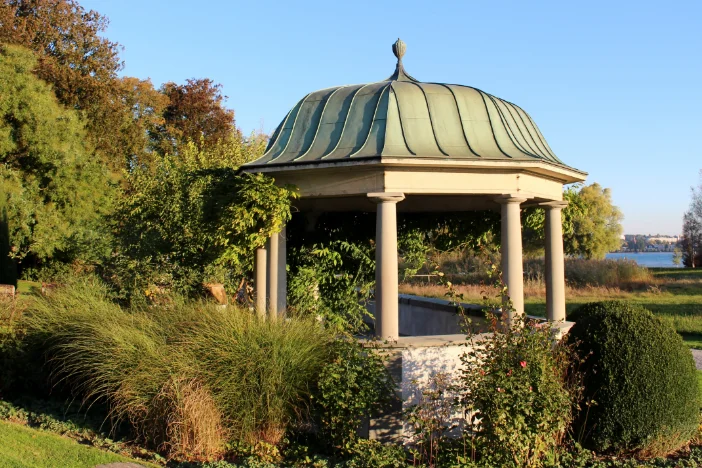
Spacious outdoor coverage for a variety of uses
Pavilions are essentially large tents that provide shelter. The name comes from the old French word “pavellun” or “paveillon” (small palace), which comes from the Latin word “papilio” (butterfly). This gives you a clue as to what they’re like: lightweight and thin.
A pavilion has a completely closed roof, and all four sides are completely open. It’s supported by four to six posts, although some styles have more (or less).
The main difference between a pavilion and a gazebo is that there’s no built-in floor and they tend to be larger.

Materials
In general, pavilion frames use materials such as:
- Wood
- Metal
- Concrete
- Stone
- Vinyl
For the roof, the most commonly used materials are shingles or metal.
Purpose/Use
People first used pavilions as temporary residences. Later, they served religious purposes, especially in Asia.
But starting in the early 20th century, we started using them as social gathering places. In fact, we still use pavilions for things such as sports grounds, fairgrounds, meetings, theater, lectures and exhibitions.
Those placed in residential yards provide shelter from the elements, such as the sun and the rain. Because they’re so large, these sunshade structures can serve as focal points too.
History
In the past, pavilions were temporary structures, which made sense for them to be lightweight and thin. But as time went on, and we created more stable and permanent residences, they became more of a decorative thing. For example, in Asia, you’d find them in parks, gardens, and even temples.
In the US specifically, the term “pavilion” was popular in the Eastern colonies. It then spread throughout New England and the Deep South. Advertisements for pavilion sales appeared as early as the 18th and 19th centuries.
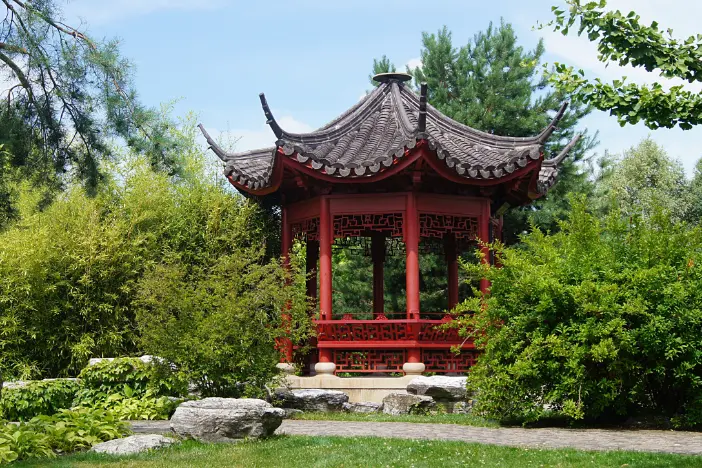
Placement
It’s common to find pavilions placed in public gardens and parks. However, in residences, they’re typically placed on the patio or deck, attached to the house. When put by the pool, they become a poolhouse.
You can always think outside of the box and place a freestanding one anywhere in your yard though, as it’s fantastic for hours of entertainment underneath.
Designs/Styles
The standard backyard pavilion works well with rustic and modern houses. It has simple yet elegant features and is nice enough that it won’t stick out like a sore thumb, nor will it steal the spotlight from the garden you’ve worked so hard on. Timber frames and natural finishes help them to blend in with natural outdoor living spaces.
Take it a step further, and you’ll get the double-roof pagoda. It’s still a simple design, but the double-tiered roof adds that extra bit of flair.
Push it another step and you’ll get the hex bell roof pavilion. This clean design has a bell-shaped roof with a small window top and is supported by classic pillars.
If you like Asian architecture, then opt for either a traditional Chinese pavilion or a Japanese tea house design. They’re typically wooden and have special intricate carvings and decorative details.
Modern Customizations
To coordinate with your home’s current aesthetics, you can customize your pavilion roof. Choose from types like hip, gable and flat. Minimalist pavilions keep a low profile to avoid distracting from the surroundings.
You can also add curtains and shades to get some privacy and additional protection from harsh weather.
Because pavilions are so simple, you can upgrade the look with decorative elements, such as arches, columns and decorative trim. Picking the right ones can give a more cohesive feel with your house.
There’s ample space beneath these structures, so you can fill yours with chairs and even dining sets. You and your loved ones will be able to dine al fresco whenever you wish!
Pavilions – Pros & Cons
PROS
- Protection from sun & rain
- 360° view
- Multi-purpose
- Can attach fixtures
- Easy to clean
CONS
- Not shielded from strong winds
- Not protected from bugs
- Lack of privacy
- Large size may limit locations
- Expensive
Versatile use but fewer customizations
Pavilions shelter dinners, marketplaces and a host of other activities. However, their open-sided design limits customization opportunities. If you’re looking for a highly configurable shade solution, you should read the next section of our guide on canopies.

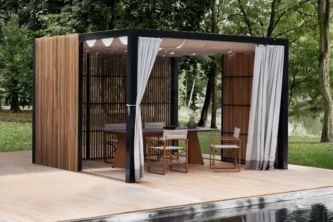
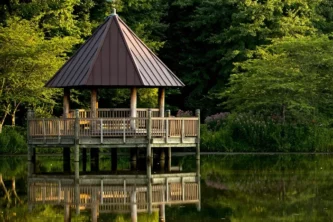
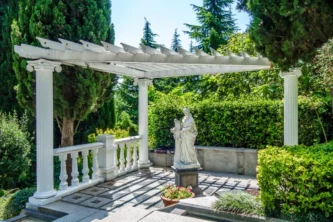
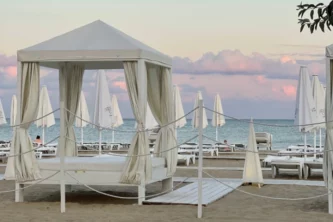
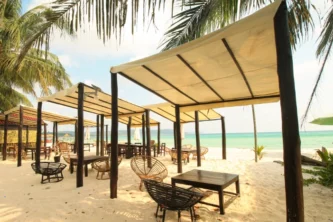
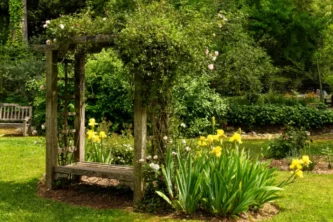




Leave a Reply